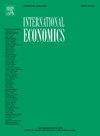The impact of the U.S. Covid-19 response on remittance flows to emerging markets and developing economies
引用次数: 0
Abstract
Nearly 25 percent of total worldwide remittances each year originate in the United States. During the Covid-19 pandemic, worldwide remittances fell precipitously in the first half of 2020, and then recovered in the second half. Thus, there has been a tremendous amount of resiliency in aggregate remittance flows since the onset of the pandemic, though country-specific experiences have varied. In this paper, we study the response of remittance flows to U.S.-specific shocks during the pandemic, such as changes in U.S. deaths, U.S. unemployment in migrant-intensive industries, U.S. unemployment insurance and personal current transfer receipts. Using both panel vector autoregressive (panel VAR) and global vector autoregressive (global VAR) models, along with monthly data from 2018 to 2021, we find that remittance flows into emerging markets decline sharply in response to U.S. unemployment shocks across industries and to shocks in U.S. deaths. However, flows recover quickly after one to two months. Due to the large immigrant presence and proximity to the United States, the most sizable remittance response is detected in Latin America. The response to U.S. fiscal stimulus is net positive. Combining both models provides insights on the direct effect of U.S. shocks on remittance flows with the panel VAR, as well as the impact within the context of a global system of countries and global factors that may adversely affect all countries in the system with the global VAR, as seen during Covid-19. We contribute to the literature by studying the macroeconomic impact of the U.S. reaction to the pandemic for countries that are large recipients of remittances originating from the United States.
美国应对新冠肺炎疫情对新兴市场和发展中经济体汇款流动的影响
全世界每年汇款总额的近25%来自美国。在2019冠状病毒病大流行期间,全球汇款在2020年上半年急剧下降,然后在下半年恢复。因此,尽管各国的具体情况各不相同,但自疫情爆发以来,总汇款流量具有很大的弹性。在本文中,我们研究了大流行期间汇款流量对美国特有冲击的反应,例如美国死亡人数、美国移民密集型产业失业率、美国失业保险和个人经常转移收入的变化。使用面板向量自回归(panel VAR)和全球向量自回归(global vector autoregressive, global VAR)模型,以及2018年至2021年的月度数据,我们发现,在美国各行业失业冲击和美国死亡冲击的影响下,流入新兴市场的汇款急剧下降。然而,一到两个月后,流量就会迅速恢复。由于移民众多且靠近美国,拉丁美洲的汇款反应规模最大。对美国财政刺激的反应是正面的。结合这两种模型,可以深入了解美国冲击对面板VAR的汇款流动的直接影响,以及在全球国家体系背景下的影响,以及在全球VAR可能对系统中所有国家产生不利影响的全球因素,如2019冠状病毒病期间所见。我们通过研究美国对大流行病的反应对大量接收美国汇款的国家的宏观经济影响,为文献作出贡献。
本文章由计算机程序翻译,如有差异,请以英文原文为准。
求助全文
约1分钟内获得全文
求助全文
来源期刊

International Economics
Economics, Econometrics and Finance-Economics, Econometrics and Finance (all)
CiteScore
6.30
自引率
0.00%
发文量
74
审稿时长
71 days
 求助内容:
求助内容: 应助结果提醒方式:
应助结果提醒方式:


